E-commerce
How to add a pop up on squarespace ?
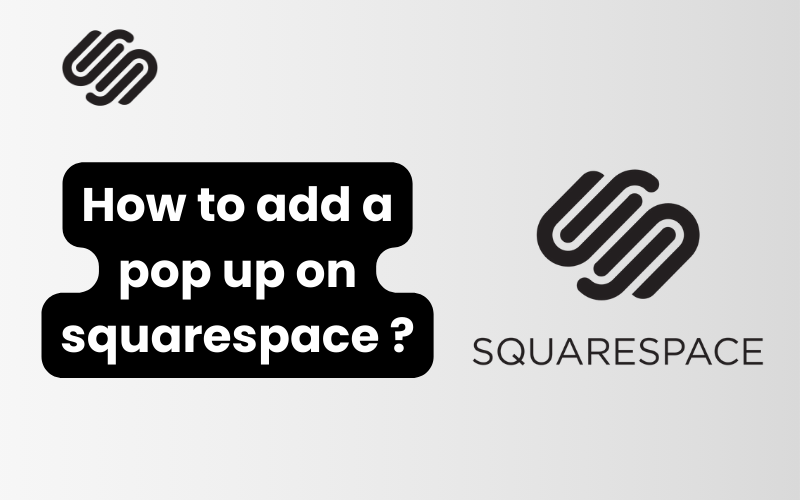
In the ever-evolving landscape of digital marketing, capturing and engaging your website visitors remains paramount. Pop-ups, those strategic website overlays, have become a powerful tool for businesses to achieve precisely that. Squarespace, the intuitive website building platform, equips you with the functionality to create and implement pop-ups that seamlessly integrate with your brand identity and marketing goals.
How to add a pop up on squarespace ?
This extensive guide delves into the world of Squarespace pop-ups, empowering you to leverage their potential to its fullest. We’ll explore everything you need to know, from crafting compelling pop-up content to customizing its design and optimizing its appearance for maximum impact.
Unveiling the Power of Pop-Ups on Squarespace
Pop-ups serve a multitude of purposes, effectively bridging the gap between visitors and conversions. Here’s a glimpse into the magic they can weave:
- Boost Email List Signups: Convert fleeting website visits into loyal subscribers by enticing visitors to join your email list. Offer valuable incentives like exclusive discounts, early access to promotions, or downloadable content in exchange for their email addresses.
- Promote Special Offers and Discounts: Showcase limited-time deals, seasonal discounts, or exclusive promotions through pop-ups. This time-sensitive approach can nudge visitors towards making a purchase or taking advantage of the offer before it disappears.
- Drive Traffic to Specific Pages: Do you have a captivating blog post or a high-converting landing page on your Squarespace website? Utilize pop-ups to strategically direct visitors towards these valuable resources.
- Gather Valuable User Feedback: Pop-ups can be a fantastic tool to gather user feedback through surveys, polls, or simple yes/no questions. This intel can be instrumental in refining your website, content strategy, and overall user experience.
Read More : How to add google analytics to squarespace ?
Crafting the Perfect Pop-Up on Squarespace: A Step-by-Step Guide
Squarespace offers a user-friendly interface for creating and customizing pop-ups. Follow these steps to craft your ideal pop-up:
-
Navigate to the Marketing Section: Within your Squarespace dashboard, head over to the Marketing section. Here, you’ll find the option for “Promotional Pop-Up” under the Engagement tab.
-
Enable the Pop-Up: Click on the toggle switch next to “Display Pop-Up” to activate this feature.
-
Selecting the Perfect Layout: Squarespace provides a variety of pop-up layouts to choose from. Consider your content and objective when making this decision. Here’s a breakdown of some popular options:
- Image and Text: An ideal layout for pop-ups that feature a visually captivating image alongside compelling text.
- Text Only: This layout works well for pop-ups with concise messages or calls to action.
- Full Screen Pop-Up: This layout offers maximum impact, effectively grabbing the visitor’s attention with a large-scale pop-up that overlays the entire screen.
-
Crafting Compelling Content: Now comes the heart of your pop-up: the content. Here are some key elements to consider:
- Headline: Craft a captivating headline that instantly grabs the visitor’s attention. Keep it clear, concise, and benefit-oriented.
- Body Text: Expand upon the headline in the body text. Explain the value proposition of your offer, discount, or call to action. Keep it concise and persuasive, highlighting the benefits for the visitor.
- Call to Action: Tell your visitors what you want them to do next. Whether it’s subscribing to your email list, redeeming a discount code, or visiting a specific page, make the call to action clear and actionable.
-
Optimizing Pop-Up Appearance: Squarespace empowers you to customize the look and feel of your pop-up to seamlessly integrate with your website’s branding. Utilize the style settings to modify elements like fonts, colors, and button styles.
-
Tailoring Pop-Up Display: Determine when and where your pop-up will appear on your website. Squarespace offers various options, including displaying the pop-up upon page load, after a certain amount of time spent on the page, or upon scrolling down to a specific section. You can also choose to show the pop-up on all pages or specific pages of your website.
-
Testing and Refining: Once you’ve created your pop-up, it’s crucial to test its effectiveness. Squarespace allows you to preview the pop-up before publishing it live. Continuously monitor its performance and make adjustments to content, timing, or display settings based on the results.
Read More : Is squarespace website down ?
Beyond the Basics: Advanced Pop-Up Strategies for Squarespace
Having grasped the fundamentals, let’s explore some advanced strategies to elevate your Squarespace pop-ups and maximize their impact:
Segmentation and Personalization:
Not all visitors are created equal. Squarespace allows you to personalize your pop-up content based on visitor behavior or demographics. This can significantly enhance engagement. Here are some ways to achieve personalization:
- Exit-Intent Pop-Ups: Target visitors who are about to leave your website with a compelling pop-up offering a last-minute incentive or discount. This can be a great way to recapture their attention and convert them before they disappear.
- Geo-Targeting: Showcase targeted promotions or offers relevant to a visitor’s location. This demonstrates an understanding of their needs and can increase the perceived value of your pop-up.
- Previous Visitor Behavior: Leverage visitor behavior data to personalize your pop-up content. For instance, if a visitor has viewed a specific product category on your website, present a pop-up featuring related products or discounts.
A/B Testing:
A/B testing allows you to experiment with different variations of your pop-up and identify the version that resonates best with your audience. Squarespace facilitates this process by enabling you to create multiple pop-up variations and test them against each other. Here are some elements you can A/B test:
- Headlines: Test different headlines to see which one captures the most attention and clicks.
- Images: Explore the effectiveness of different visuals in your pop-up design.
- Call to Action: Experiment with various call-to-action phrases and button styles to determine what drives the highest conversion rate.
Read More : How to cancel squarespace subscription ?
Triggering Pop-Ups Based on User Actions:
Squarespace offers the functionality to trigger pop-ups based on specific user actions. This allows you to deliver highly relevant messages at opportune moments. Here are some examples:
- Scroll Depth: Trigger a pop-up when a visitor scrolls down to a specific point on a page, indicating their engagement with the content.
- Clicking on a Specific Element: Display a pop-up with additional details or special offers when a visitor clicks on a particular button or image.
Leveraging Scarcity and Urgency:
Creating a sense of urgency or scarcity can incentivize visitors to take immediate action. Here’s how to incorporate these elements into your pop-ups:
- Countdown Timers: Display a countdown timer that highlights the limited-time nature of an offer or promotion.
- Limited Availability: Indicate the limited quantity of a product or service to nudge visitors towards a purchase before it runs out.
Integrating with Email Marketing Platforms:
Squarespace seamlessly integrates with various email marketing platforms. This allows you to automatically add email addresses captured through your pop-up to your email list, streamlining the process and ensuring you can nurture leads effectively.
Advanced Design Considerations:
- Mobile-Responsiveness: Ensure your pop-up design is optimized for mobile devices. With the majority of web traffic now stemming from smartphones, a responsive pop-up ensures a seamless user experience across all devices.
- Animation and Effects: While animations and effects can add visual interest, use them sparingly to avoid overwhelming your visitors or hindering readability.
Read More : How do i upgrade my squarespace account ?
Faq’s
Can I add pop-ups to my Squarespace website?
Absolutely! Squarespace offers a built-in feature for creating and managing promotional pop-ups. This functionality allows you to easily integrate pop-ups into your website design and leverage them to achieve various marketing goals.
What are the benefits of using pop-ups on Squarespace?
Pop-ups offer a multitude of benefits, including:
- Boosting email list signups: Convert website visitors into subscribers by offering incentives in exchange for their email addresses.
- Promoting special offers and discounts: Showcase limited-time deals and promotions to capture visitor attention and drive sales.
- Directing traffic to specific pages: Strategically guide visitors towards valuable content or landing pages on your website.
- Gathering user feedback: Utilize pop-ups to conduct surveys, polls, or collect feedback, helping you refine your website and user experience.
How do I activate pop-ups on Squarespace?
Enabling pop-ups on Squarespace is a simple process. Navigate to the Marketing section of your dashboard and locate the “Promotional Pop-Up” option under the Engagement tab. Click the toggle switch next to “Display Pop-Up” to activate this feature.
What types of pop-up layouts can I choose from in Squarespace?
Squarespace provides a variety of pop-up layouts to suit your content and objectives. Popular options include:
- Image and Text: A versatile layout ideal for showcasing a captivating image alongside compelling text.
- Text Only: Perfect for pop-ups with concise messages or clear calls to action.
- Full Screen Pop-Up: This layout offers maximum impact, effectively grabbing the visitor’s attention with a large-scale pop-up that overlays the entire screen.
What are some key elements to consider when crafting pop-up content?
Here are some crucial elements for impactful pop-up content:
- Headlines: Create clear, concise, and benefit-oriented headlines that grab attention instantly.
- Body Text: Expand upon the headline, explaining the value proposition and highlighting the benefits for the visitor. Keep it concise and persuasive.
- Call to Action: Clearly tell visitors what you want them to do next, whether it’s subscribing, redeeming a discount, or visiting a specific page.
Can I customize the appearance of my pop-up on Squarespace?
Yes! Squarespace allows you to personalize the look and feel of your pop-up to match your website’s branding. Utilize the style settings to modify elements like fonts, colors, and button styles.
When and where can I choose for my pop-up to appear?
Squarespace offers various options for controlling pop-up display. You can choose to show them upon page load, after a set time on the page, or upon scrolling down to a specific section. Additionally, you can target specific pages or display them on all website pages.
Are there any advanced pop-up strategies I can use on Squarespace?
Squarespace allows for advanced strategies like:
- Segmentation and personalization: Tailor pop-up content based on visitor behavior or demographics for a more engaging experience.
- A/B testing: Experiment with different pop-up variations to identify the version that resonates best with your audience.
- Triggering pop-ups based on user actions: Deliver relevant messages at opportune moments by triggering pop-ups based on specific user actions like scrolling depth or clicking on elements.
How can I ensure my pop-ups are mobile-friendly?
With a majority of web traffic coming from mobile devices, it’s crucial to have a responsive pop-up design. Squarespace ensures your pop-up adapts seamlessly to different screen sizes, delivering a smooth user experience across all devices.
Where can I find more resources on Squarespace pop-ups?
Squarespace offers comprehensive documentation and tutorials on their website. Additionally, online resources and communities can provide valuable insights and best practices for crafting effective pop-ups for your Squarespace website.
Conclusion
Squarespace pop-ups, when strategically crafted and implemented, offer a potent tool to elevate your website’s engagement and conversions. By following the comprehensive guide outlined above, you’ll be well-equipped to create pop-ups that resonate with your audience and propel your website towards success. Remember, continuous testing and refinement are paramount in optimizing your pop-up strategy. So, unleash your creativity, leverage the power of Squarespace, and watch your website flourish!
E-commerce
How to add a font to squarespace ?
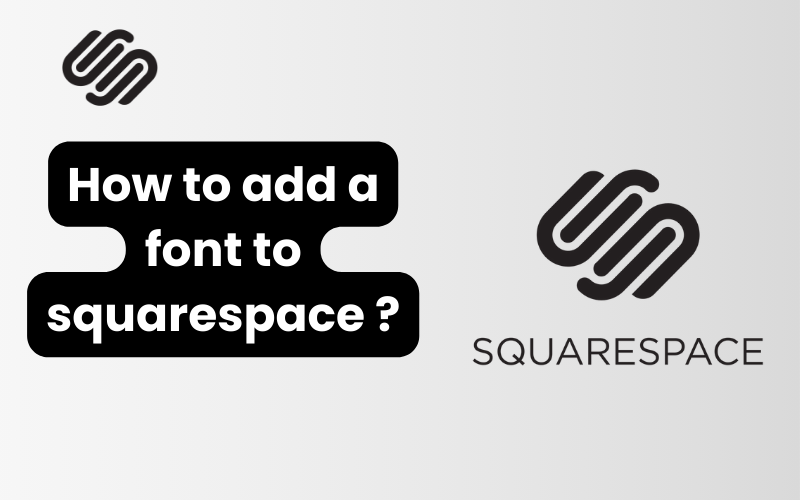
Squarespace is a popular platform for building visually stunning websites. One of the ways to make your Squarespace site unique is by adding custom fonts. Custom fonts can enhance the aesthetic appeal of your website and align with your brand identity. In this comprehensive guide, we will walk you through the process of adding a font to your Squarespace site, ensuring your website stands out from the competition.
How to add a font to squarespace ?
Before diving into custom fonts, it’s essential to understand the built-in font options Squarespace offers. Squarespace provides a wide range of Google Fonts and Typekit Fonts that you can easily integrate into your site without additional coding. These fonts are readily available and can be a great starting point for enhancing your site’s typography.
Why Add Custom Fonts to Squarespace?
While Squarespace offers an impressive selection of fonts, you may have specific branding requirements that necessitate the use of custom fonts. Custom fonts can help:
- Reinforce Brand Identity: Unique typography can make your brand more recognizable.
- Enhance Readability: Specific fonts may improve the readability of your content.
- Create Visual Interest: Custom fonts can make your website more visually appealing and engaging.
Choosing the Right Font
When selecting a custom font, consider the following:
- Legibility: Ensure the font is easy to read on various devices.
- Style: Choose a font that matches your brand’s personality and style.
- Web-Friendliness: Opt for fonts designed for web use to ensure they load quickly and display correctly.
Read More : How to add a blog to squarespace ?
Step-by-Step Guide to Adding a Custom Font to Squarespace
1. Prepare Your Custom Font Files
First, you need to have your custom font files ready. The most common formats are WOFF, WOFF2, TTF, and EOT. Ensure you have the appropriate licenses to use the font on your website.
2. Upload the Font Files to Squarespace
- Navigate to the Design Menu: In your Squarespace dashboard, go to the Design menu.
- Open Custom CSS: Click on Custom CSS.
- Upload Files: Scroll to the bottom of the Custom CSS panel and click on Manage Custom Files. Here, you can upload your font files by dragging them into the upload area.
3. Add CSS Code to Your Site
Once your font files are uploaded, you need to add CSS code to your site to reference these files and apply the fonts.
- Reference the Font Files: Use the following CSS code to reference your uploaded font files. Replace
your-font-namewith the name of your font andyour-font-filewith the URL of your uploaded font file.css
@font-face {
font-family: 'YourFontName';
src: url('your-font-file.woff2') format('woff2'),
url('your-font-file.woff') format('woff');
font-weight: normal;
font-style: normal;
}
- Apply the Font: To apply the custom font to specific elements, use CSS selectors. For example, to apply the font to all headings and paragraphs, you can use:
css
h1, h2, h3, h4, h5, h6, p {
font-family: 'YourFontName', sans-serif;
}
4. Test Your Custom Font
After adding the CSS code, it is crucial to test your custom font to ensure it displays correctly across different browsers and devices. Here are a few steps to test your font:
- Clear Your Cache: Clear your browser cache to see the changes.
- Check Different Browsers: View your site in various browsers (Chrome, Firefox, Safari, Edge) to ensure compatibility.
- Test on Mobile Devices: Use mobile devices to check if the font renders correctly on smaller screens.
5. Fine-Tuning and Troubleshooting
If the custom font does not display correctly, double-check the following:
- Correct File Paths: Ensure the URLs in the
@font-facedeclaration are accurate. - Font Format: Make sure you are using the correct font formats supported by most browsers.
- CSS Specificity: Verify that your CSS selectors are correctly targeting the elements you want to style.
Enhancing Typography with Squarespace’s Built-In Features
In addition to custom fonts, you can enhance your website’s typography using Squarespace’s built-in features:
- Font Weights and Styles: Adjust the weight and style of fonts (bold, italic) for emphasis.
- Line Height and Letter Spacing: Modify line height and letter spacing for improved readability.
- Text Alignment and Decoration: Utilize text alignment (left, center, right) and decoration (underline, strikethrough) options.
Read More : How to add a button in squarespace ?
Faq’s
1. Can I use any font on my Squarespace website?
Yes, you can use any font on your Squarespace website as long as you have the appropriate font files (WOFF, WOFF2, TTF, EOT) and the necessary licenses to use the font. Squarespace also supports a variety of built-in fonts from Google Fonts and Adobe Fonts (Typekit).
2. What are the supported font formats for Squarespace?
Squarespace supports several font formats, including WOFF, WOFF2, TTF, and EOT. These formats ensure that fonts display correctly across different browsers and devices.
3. How do I upload custom fonts to Squarespace?
To upload custom fonts to Squarespace, navigate to the Design menu in your Squarespace dashboard, open the Custom CSS panel, and click on Manage Custom Files. Here, you can upload your font files by dragging them into the upload area.
4. How do I reference uploaded fonts in my CSS?
You can reference uploaded fonts in your CSS by using the @font-face rule. Here’s an example:
css
@font-face {
font-family: 'YourFontName';
src: url('your-font-file.woff2') format('woff2'),
url('your-font-file.woff') format('woff');
font-weight: normal;
font-style: normal;
}
Replace 'YourFontName' with the name of your font and 'your-font-file' with the URL of your uploaded font file.
5. How can I apply custom fonts to specific elements on my Squarespace site?
To apply custom fonts to specific elements, use CSS selectors in the Custom CSS panel. For example, to apply a custom font to all headings and paragraphs, use:
css
h1, h2, h3, h4, h5, h6, p {
font-family: 'YourFontName', sans-serif;
}
Replace 'YourFontName' with the name of your custom font.
6. Will custom fonts affect my site’s loading speed?
Using custom fonts can impact your site’s loading speed, especially if the font files are large. To minimize this effect, choose web-friendly fonts optimized for online use and compress your font files if necessary.
7. Can I use multiple custom fonts on my Squarespace website?
Yes, you can use multiple custom fonts on your Squarespace website. Upload each font file separately and reference each one using the @font-face rule in your Custom CSS.
8. How do I troubleshoot if my custom font is not displaying correctly?
If your custom font is not displaying correctly, check the following:
- Ensure the file paths in the
@font-facedeclaration are correct. - Verify that you are using the supported font formats.
- Check the CSS specificity to ensure the correct elements are being targeted.
- Clear your browser cache and test in different browsers.
9. Can I use Google Fonts and custom fonts together on Squarespace?
Yes, you can use Google Fonts and custom fonts together on Squarespace. You can select Google Fonts from the Design menu and add custom fonts through the Custom CSS panel.
10. Do I need coding knowledge to add custom fonts to Squarespace?
While some basic CSS knowledge is helpful, you do not need advanced coding skills to add custom fonts to Squarespace. The platform provides a user-friendly interface that allows you to upload files and apply CSS with relative ease.
Conclusion
Adding a custom font to your Squarespace site can significantly enhance its visual appeal and align it with your brand identity. By following the steps outlined in this guide, you can easily integrate custom fonts and create a unique, professional-looking website. Always remember to test your fonts across different browsers and devices to ensure a seamless user experience.
E-commerce
How to add a button in squarespace ?

Adding a button to your Squarespace website can significantly enhance user experience and drive engagement. Buttons serve as clear calls to action, guiding visitors toward desired actions such as making a purchase, subscribing to a newsletter, or contacting your team. This comprehensive guide will walk you through the detailed steps of adding a button in Squarespace, ensuring that even those new to website design can follow along with ease.
How to add a button in squarespace ?
1. Accessing the Squarespace Editor
To begin, log in to your Squarespace account and navigate to the website where you wish to add a button. Click on the “Edit” button to access the page editor.
2. Selecting the Page or Section
Decide where you want the button to appear. You can add a button to various parts of your website, including the header, footer, and body sections. Navigate to the specific page or section where you want to place the button.
3. Adding a Button Block
In Squarespace, buttons are added via Button Blocks. Follow these steps:
- Insert a Block: Hover over the section where you want to add the button. Click on the “Add Block” button (denoted by a plus sign).
- Choose the Button Block: From the list of available blocks, select “Button”. This will add a button block to your chosen section.
4. Customizing the Button
Once the button block is added, you can customize it to match your website’s design and intended purpose. Here’s how:
- Edit Button Text: Click on the button to edit the text. Make sure the text is clear and action-oriented, such as “Buy Now,” “Subscribe,” or “Contact Us.”
- Add a URL: In the button settings, you can add a URL that the button will link to. Enter the URL in the designated field. Ensure it is accurate and functional.
- Design the Button: Squarespace offers several design options. You can adjust the button’s style, size, alignment, and color to fit your website’s aesthetic.
5. Advanced Button Settings
For users who want more control over their buttons, Squarespace provides advanced settings:
- Button Click Actions: Besides linking to a URL, you can set the button to open a file, send an email, or link to a specific page section.
- Adding Icons: Some buttons benefit from the addition of icons. This can make them more visually appealing and informative.
- Mobile Optimization: Ensure your button looks good and functions properly on mobile devices. Squarespace’s responsive design features help with this, but it’s good practice to preview your changes on mobile.
Read More :
Using Code to Customize Buttons
While Squarespace’s built-in tools are powerful, sometimes custom code is necessary for more advanced button customization. Here’s a brief overview of how to use code to enhance your buttons:
1. Adding Custom CSS
To add custom CSS to your buttons:
- Navigate to Custom CSS: Go to Design > Custom CSS.
- Enter Your CSS Code: In the Custom CSS panel, enter the code to style your button. For example, to change the button’s background color and add a hover effect:
css
.sqs-block-button-element--primary {
background-color: #ff5733;
border-radius: 5px;
}
.sqs-block-button-element--primary:hover {
background-color: #c70039;
}
2. Adding Custom HTML
To use custom HTML for more intricate button designs:
- Insert a Code Block: Instead of a Button Block, add a Code Block to your section.
- Enter Your HTML Code: Write your HTML for the button. For example:
html
<a href="https://yourlink.com" class="custom-button">Click Me!</a>
- Style with CSS: Combine this with custom CSS for styling:
css
.custom-button {
display: inline-block;
padding: 10px 20px;
background-color: #28a745;
color: #fff;
text-align: center;
border-radius: 5px;
text-decoration: none;
}
.custom-button:hover {
background-color: #218838;
}
3. Using JavaScript for Interactive Buttons
For advanced functionality, JavaScript can be added:
- Insert a Code Block: As before, add a Code Block.
- Write Your JavaScript: For instance, to show an alert when the button is clicked:
html
<a href="#" class="interactive-button" onclick="alert('Button clicked!');">Click Me!</a>
- Style with CSS:
css
.interactive-button {
padding: 10px 20px;
background-color: #007bff;
color: #fff;
text-align: center;
border-radius: 5px;
text-decoration: none;
}
.interactive-button:hover {
background-color: #0056b3;
}
Best Practices for Button Placement and Design
1. Clear Call to Action
Ensure the button text is concise and action-oriented. Phrases like “Learn More,” “Get Started,” and “Download Now” are effective.
2. Visibility and Contrast
The button should be easily noticeable. Use contrasting colors to make it stand out against the background. Ensure the button is large enough to be easily clickable on all devices.
3. Consistent Styling
Maintain a consistent style for buttons throughout your site. This helps with brand recognition and provides a cohesive user experience.
4. Strategic Placement
Position buttons where users are most likely to engage with them. Common locations include at the end of blog posts, in the header, and near high-traffic areas on your site.
Testing and Optimization
After adding and styling your button, it’s crucial to test its functionality:
- Check Links: Verify that all links work correctly and lead to the intended destinations.
- Mobile Testing: Ensure the button is responsive and functions well on mobile devices.
- A/B Testing: Experiment with different button styles, texts, and placements to see which configurations yield the best user engagement.
Read More :
Faq’s
1. How do I add a button to a specific section of my Squarespace website?
To add a button to a specific section of your Squarespace website, enter the page editor by clicking “Edit.” Hover over the section where you want to place the button and click the “Add Block” button. From the list of available blocks, select “Button” to insert the button block into that section.
2. Can I customize the appearance of the button?
Yes, you can customize the appearance of the button. After adding the button block, click on it to access the settings where you can change the button text, size, style, alignment, and color. You can also add custom CSS for more advanced styling options.
3. How do I link the button to a specific URL or page?
In the button settings, you will find a field where you can enter the URL that the button should link to. Simply paste the desired URL into this field. The button can link to an external website, an internal page, or even a specific section within a page.
4. Is it possible to add a button to the header or footer of my Squarespace site?
Yes, you can add buttons to the header or footer of your Squarespace site. For the header, you can add a button by editing the header section and inserting a button block. For the footer, navigate to the footer section and add a button block in the same manner.
5. Can I add an icon to my button?
Yes, you can add an icon to your button. In the button settings, there is an option to add icons from the available library. This can enhance the visual appeal and functionality of the button.
6. How do I ensure my button looks good on mobile devices?
Squarespace’s responsive design automatically adjusts elements for mobile devices. However, it is good practice to preview your changes on mobile to ensure the button looks and functions properly. You can make adjustments in the button settings or use custom CSS for further refinement.
7. What are some common uses for buttons on a website?
Buttons on a website are commonly used for calls to action such as “Buy Now,” “Subscribe,” “Contact Us,” “Learn More,” and “Download.” They guide users toward desired actions and improve the overall user experience.
8. Can I use custom code to further customize my buttons?
Yes, you can use custom HTML, CSS, and JavaScript to further customize your buttons. You can add a code block instead of a button block to write your custom HTML and CSS. JavaScript can be used for more interactive button functionalities.
9. How do I make a button that triggers a specific action, like sending an email or downloading a file?
In the button settings, you can set the button to trigger specific actions beyond linking to a URL. Options include opening a file, sending an email, or linking to a specific section within a page. Customize the button settings accordingly to achieve the desired action.
10. What should I do if my button isn’t working as expected?
If your button isn’t working as expected, double-check the URL or action link to ensure it is correct. Verify that there are no typos or broken links. If you are using custom code, ensure that the HTML, CSS, or JavaScript is correctly implemented. Testing the button in different browsers and devices can also help identify and resolve issues.
Conclusion
Adding a button in Squarespace is a straightforward process that can greatly enhance user interaction and conversion rates on your website. By following the steps outlined in this guide, you can effectively create and customize buttons that align with your site’s design and functionality goals. Whether you use built-in tools or custom code, the key is to ensure that your buttons are clear, visually appealing, and strategically placed.
E-commerce
How to add a blog to squarespace ?
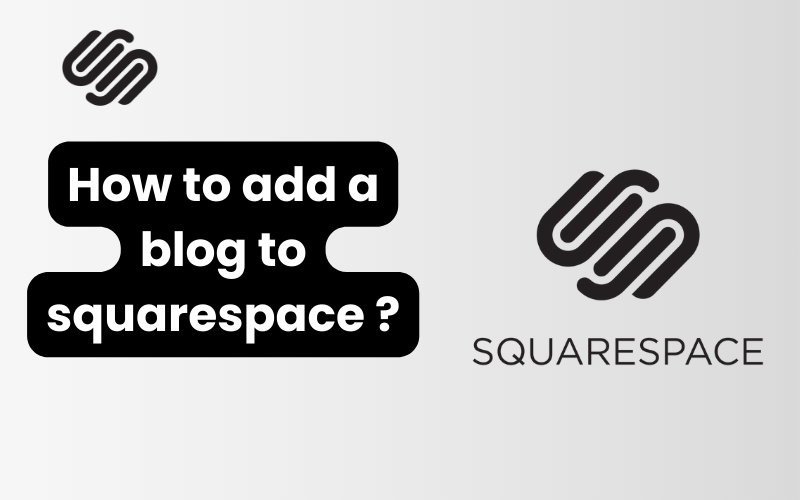
In today’s digital age, having a strong online presence is essential for businesses and individuals alike. One effective way to boost your online presence and engage with your audience is by creating a blog. If you’re using Squarespace as your website builder, you’re in luck! Squarespace offers a user-friendly platform that makes it easy to add a blog to your website. In this comprehensive guide, we’ll walk you through the step-by-step process of adding a blog to Squarespace, ensuring that your website is equipped with this powerful tool for communication and engagement.
How to add a blog to squarespace ?
Before we dive into the specifics of adding a blog to your Squarespace website, let’s take a moment to familiarize ourselves with the platform. Squarespace is a popular website builder known for its intuitive interface and stunning design templates. Whether you’re a seasoned web designer or a complete novice, Squarespace offers the tools and features you need to create a professional-looking website with ease.
Creating Your Squarespace Website
The first step in adding a blog to Squarespace is, of course, creating your website. If you haven’t already done so, sign up for a Squarespace account and choose a template that suits your needs. Squarespace offers a wide range of templates, so take your time exploring your options and selecting the one that best reflects your brand identity.
Once you’ve selected a template, you can begin customizing your website to your liking. Add your logo, choose your color scheme, and create pages for your site’s content. Squarespace’s drag-and-drop editor makes it easy to arrange elements on your pages, so you can design a website that looks great and functions seamlessly.
Read More : Can you change your squarespace domain ?
Adding a Blog to Your Squarespace Website
Now that your Squarespace website is up and running, it’s time to add a blog. Adding a blog to your Squarespace site is simple and straightforward, thanks to Squarespace’s intuitive interface and robust blogging tools.
To add a blog to your Squarespace website, follow these steps:
- Log in to your Squarespace account and navigate to the Pages panel.
- Click on + to Add New Page, then select Blog from the list of page types.
- Give your blog page a name, such as “Blog” or “News,” and customize the layout and design to your liking.
- Once your blog page is set up, you can start adding blog posts. Click on + to Add New Post and begin writing your content.
- Use Squarespace’s built-in editing tools to format your blog posts, add images, and create engaging content.
- Don’t forget to optimize your blog posts for SEO by including relevant keywords and metadata.
Managing Your Blog on Squarespace
Once your blog is up and running, it’s important to keep it updated with fresh, relevant content. Regularly publishing new blog posts not only keeps your audience engaged but also helps improve your website’s search engine ranking.
Squarespace makes it easy to manage your blog with features like:
- Scheduled posts: Plan your blog content in advance and schedule posts to go live at specific times.
- Categories and tags: Organize your blog posts into categories and add tags to help users find content relevant to their interests.
- Comments: Enable comments on your blog posts to encourage interaction and engagement with your audience.
- Analytics: Track your blog’s performance with Squarespace’s built-in analytics tools, which provide valuable insights into your audience’s behavior and preferences.
Read More : How do i cancel squarespace ?
Faq’s
Can I add a blog to my existing Squarespace website?
Yes, you can easily add a blog to your existing Squarespace website. Simply navigate to the Pages panel, click on + Add New Page, and select Blog from the list of page types. From there, you can customize your blog page and start adding blog posts.
Do I need any coding skills to add a blog to Squarespace?
No coding skills are required to add a blog to Squarespace. Squarespace offers a user-friendly interface with drag-and-drop functionality, making it easy for anyone to create and customize a blog page.
Can I customize the design of my blog on Squarespace?
Yes, you can customize the design of your blog on Squarespace to match the look and feel of your website. Squarespace offers a variety of templates and customization options, allowing you to create a blog that reflects your brand identity.
How do I add blog posts to my Squarespace blog?
To add blog posts to your Squarespace blog, simply navigate to your blog page, click on + Add New Post, and start writing your content. Squarespace’s built-in editing tools make it easy to format your blog posts and add images.
Can I schedule blog posts to be published at a later date?
Yes, you can schedule blog posts to be published at a later date on Squarespace. When creating a new blog post, simply click on the scheduling option and choose the date and time you’d like your post to go live.
Does Squarespace offer SEO tools for optimizing my blog?
Yes, Squarespace offers built-in SEO tools to help optimize your blog for search engines. You can easily add meta titles, descriptions, and keywords to your blog posts, as well as customize your URLs for better search visibility.
Can I track the performance of my Squarespace blog?
Yes, Squarespace offers built-in analytics tools that allow you to track the performance of your blog. You can monitor metrics such as page views, visitor demographics, and popular content to gain insights into your audience’s behavior.
Are there any limitations to adding a blog to Squarespace?
While Squarespace offers robust blogging tools, there are some limitations to be aware of. For example, Squarespace’s blogging features may not be as advanced as dedicated blogging platforms like WordPress. However, Squarespace’s simplicity and ease of use make it an excellent choice for beginners.
Can I monetize my Squarespace blog?
Yes, you can monetize your Squarespace blog through various means, such as affiliate marketing, sponsored content, and selling digital products or services. Squarespace integrates with popular payment processors, making it easy to accept payments directly on your website.
Is there customer support available for adding a blog to Squarespace?
Yes, Squarespace offers customer support via email, live chat, and help guides to assist you with adding a blog to your website. Whether you have technical questions or need assistance with customization, Squarespace’s support team is there to help.
Conclusion
Adding a blog to your Squarespace website is a powerful way to engage with your audience, establish your expertise, and improve your website’s search engine ranking. With Squarespace’s user-friendly platform and robust blogging tools, creating and managing a blog has never been easier. Follow the steps outlined in this guide, and you’ll be well on your way to harnessing the full potential of your Squarespace website.
-

 E-commerce3 months ago
E-commerce3 months agoHow to close shopify store in 2024 ?
-

 E-commerce3 months ago
E-commerce3 months agoHow to request collaborator access shopify in 2024 ?
-
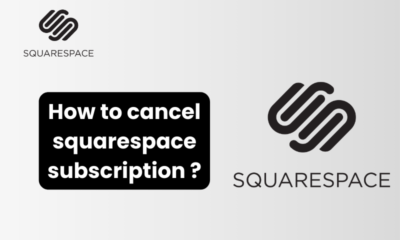
 E-commerce2 months ago
E-commerce2 months agoHow to cancel squarespace subscription ?
-

 E-commerce2 months ago
E-commerce2 months agoHow do i upgrade my squarespace account ?
-
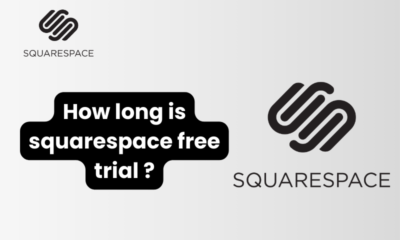
 E-commerce2 months ago
E-commerce2 months agoHow long is squarespace free trial ?
-
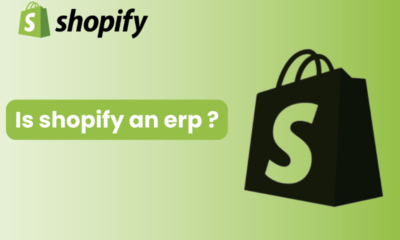
 E-commerce3 months ago
E-commerce3 months agoIs shopify an erp ?
-

 E-commerce1 month ago
E-commerce1 month agoHow to add a button in squarespace ?
-
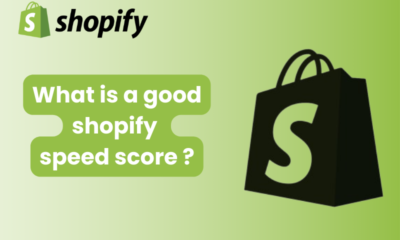
 E-commerce3 months ago
E-commerce3 months agoWhat is a good shopify speed score ?




